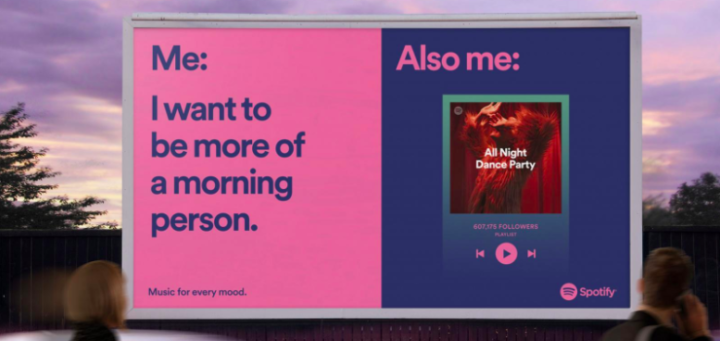To help you pick the best advertising options for your next inbound campaign, we’ve put together a list of some of the top platforms and their different features, ad types, targeting and reporting options and other important perks or quirks.
Search Engine Advertising
Google AdWords
As Google owns one of the biggest search engines in the world, Google AdWords is one of the biggest advertising platforms available for Pay Per Click (PPC) marketing.
With AdWords, you can create text, image or video advertisements which target people based on a specific keyword or keyword term they have searched for, or via Google’s Display Network. Here are details around some of the options available:
Search Ads: These are the traditional advertisements that you’re likely used to seeing at the top of the search engine results pages when you’ve done a Google search. There are typically 3-5 of these ads displayed above the organic search results. The keywords for these paid listings are sold in an auction, and you bid the amount you want to pay for each click on your ad. If you bid the most for your specific keyword, then your listing will show up first in the sponsored results.
Display Ads: Google’s Display Network is a vast network of insanely popular and reputable sites such as YouTube or Gmail where you can place valuable ads. The Display Ad Builder tool within AdWords lets you create any ad for free within minutes, in a variety of formats: text, image, video or rich media.
Remarketing: Remarketing lets you show ads to people who’ve visited your website or used your mobile app. When people leave your website without buying anything, for example, remarketing can help you reconnect with them by showing relevant ads across their different devices.
AdWords is so vast and has so many options that running your first campaign can be overwhelming. Luckily, they have an AdWords Express offering that is tailored to small businesses to help get you off the ground.
Bing
Similar to Google AdWords, Microsoft uses its Bing search engine to serve ads in its search engine results as well as display ads through their partner networks. Although Bing generally has a smaller audience than Google, it makes bidding on keywords less expensive, extending your budget further and increasing your ROI on converting traffic.
“We might not get as much of the volume as with Google AdWords, but the volume of traffic that we get converts really well at a lower cost.” — Executive Vice President of Marketing, Myrtle Beach Area Convention and Visitors Bureau
Ads appear on the top or to the right of Bing, Yahoo and MSN search results. And you can choose to target your ads to different geographic regions, times or days of the week, and even demographics. And if you call into a Bing Ads specialist to get started, they’ll even get your first campaign going for free.
Social Media Advertising
Facebook/Instagram
Two billion people use Facebook every month, 500 million use Instagram each month, and 1 of every 5 minutes people in the US spend on mobile is on Facebook or Instagram. So doesn’t it make sense to take advantage of all of that screen time with your advertisements? Additionally, Facebook lets you target an ad audience based on their demographics and user interests, so you know exactly the buyer personas that your ads are targeting — a features that isn’t available through AdWords or Bing.
Extending your reach across the platforms is super easy, with Facebook’s “One Ad Fits All“. With a few clicks, you can run ads across Facebook, Instagram, Audience Network, and Messenger on mobile and desktop. Your ads are automatically optimized for whatever device your audience is using, across whichever platform — there is no need for resizing or reformatting.
Also, whether you want to use video, photo, text, or a combination of all of them, there’s multiple advertising formats available across each platform:
Facebook:
- Video
- Photo
- Carousel
- Slideshow
- Canvas (mobile only)
Instagram:
- Video
- Photo
- Carousel
- Stories
Audience Network:
- Video
- Photo
- Carousel
Messenger:
- Photo
- Carousel
Similar to AdWords and Bing, Facebook/Instagram ads are purchased by creating an ad and submitting it to Facebook’s ad auction. The ad auction determines which ads should be shown to which people. Using information you provide in the ads creation process, the auction shows your ad to the people most likely to be interested in it. You set your budget and place the bid, and only pay for the actions (impressions, conversions, etc.) that you want.
If you’re in the B2B or services industry, advertising via LinkedIn can be a great option for you. You can target over 500 million active professionals by industry, job title, function and more. The LinkedIn newsfeed is also highly optimized for viewing across desktop, mobile and tablet devices, and you can even delivered personalized ads directly to users LinkedIn inboxes (“Sponsored InMail”).
LinkedIn ads are sold by auction. You bid against other advertisers trying to reach the same audience. For pricing, you can either choose from CPC (cost-per-click) or CPM (cost-per-1,000-impressions) pricing: ie: you can pay when people click on your ad (which is most useful if you want to drive traffic to your site or generate leads), or you can pay when people see your ad (which is most useful when your goal is to drive awareness). If you choose to advertise via Sponsored InMail, you only pay when your message is delivered (which is most useful if you want to drive highly qualified leads or event registrations).
YouTube
Unlike other social media sites, YouTube is just video, so you know people are really watching. And you get to choose just who sees your video ad. With TrueView ads, you can reach potential customers when they watch or search for videos on YouTube – and only pay when they show interest.
There are three ad formats available on YouTube:
In-Stream Ads: this is a skippable, online video ad that appears before the main video is played.
Bumper Ads: these are only 6-second videos but are a great way to capture an user’s attention on a SmartPhone with a smart and memorable message.
Discovery Ads: this format allows you to show up within the YouTube search results, on the YouTube homepage, and alongside related videos. YouTube suggests to use this format when you’re looking to reinforce your message.
You can also control who sees your ads, by selecting the geographical location where your ads are seen, and who should see them based on their age and interest in certain topics.
Most businesses start with about $10/day for local campaigns, and you only pay when people choose to watch your ad. For example, if someone chooses to watch your TrueView ad for at least 30 seconds or completes a conversion (like clicking on a call-to-action overlay or a companion banner). Right now, YouTube is offering a free $100 credit when you spend $25 on your first video ads.
How Do You Choose Which Platform is Right for You?
Paid online advertising can be very efficient and generate an impressive ROI, if you’ve chosen the right platform to advertise on. The best way to find out which platform generates the most qualified leads is to run a few test campaigns across the platforms that you think make the most sense for your business and target your buyer personas. The good thing about testing with paid marketing is that you’re paying for performance, so every penny you spend is for a click, or a view, or a conversion, so you’re not just spending money without at least getting some results.
Feel free to contact us if you’d like any guidance with running your first paid marketing campaigns, or to learn more about the inbound marketing process in general, please click the image below to receive a free inbound assessment by one of our Certified Inbound Specialists.


